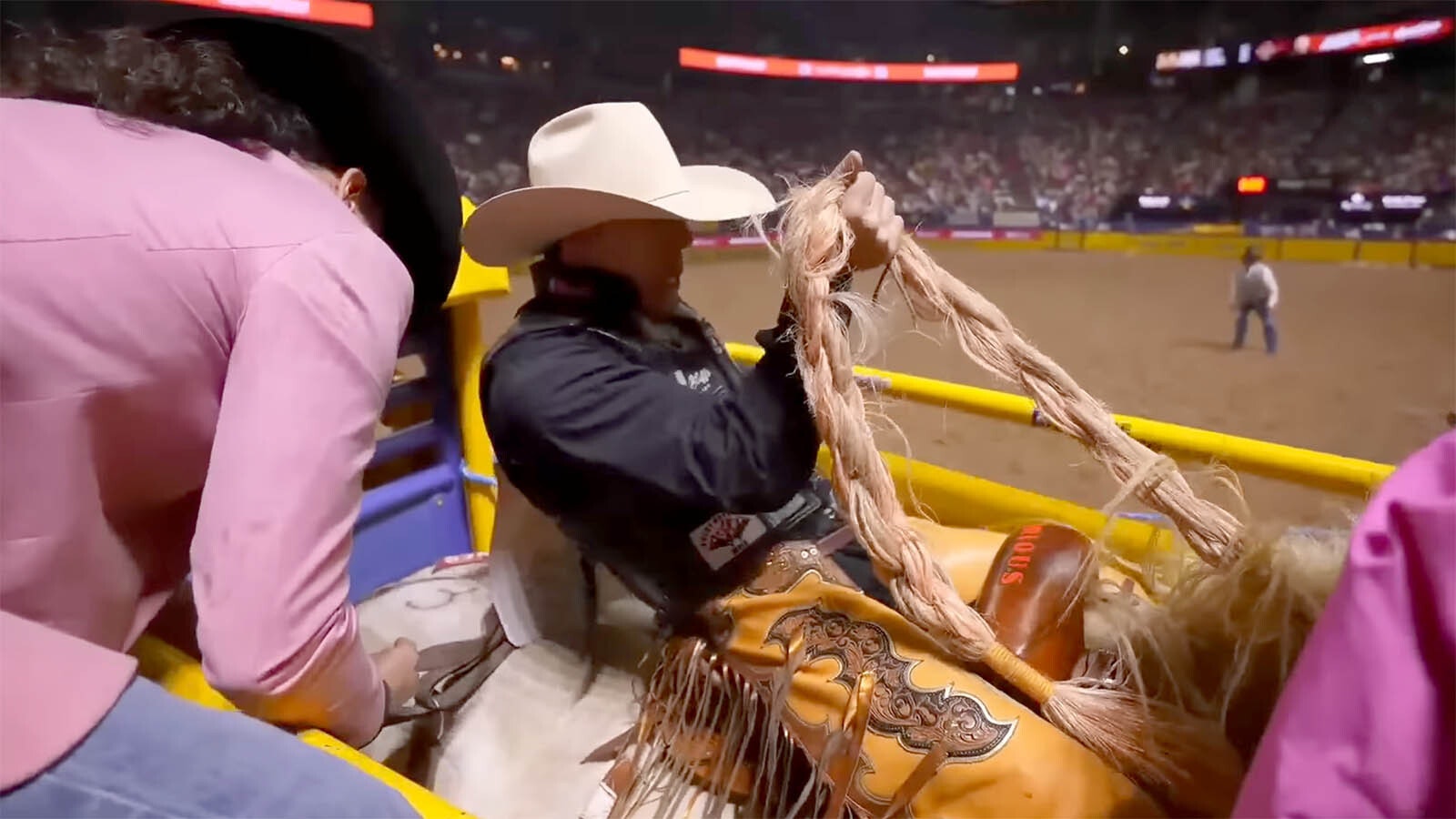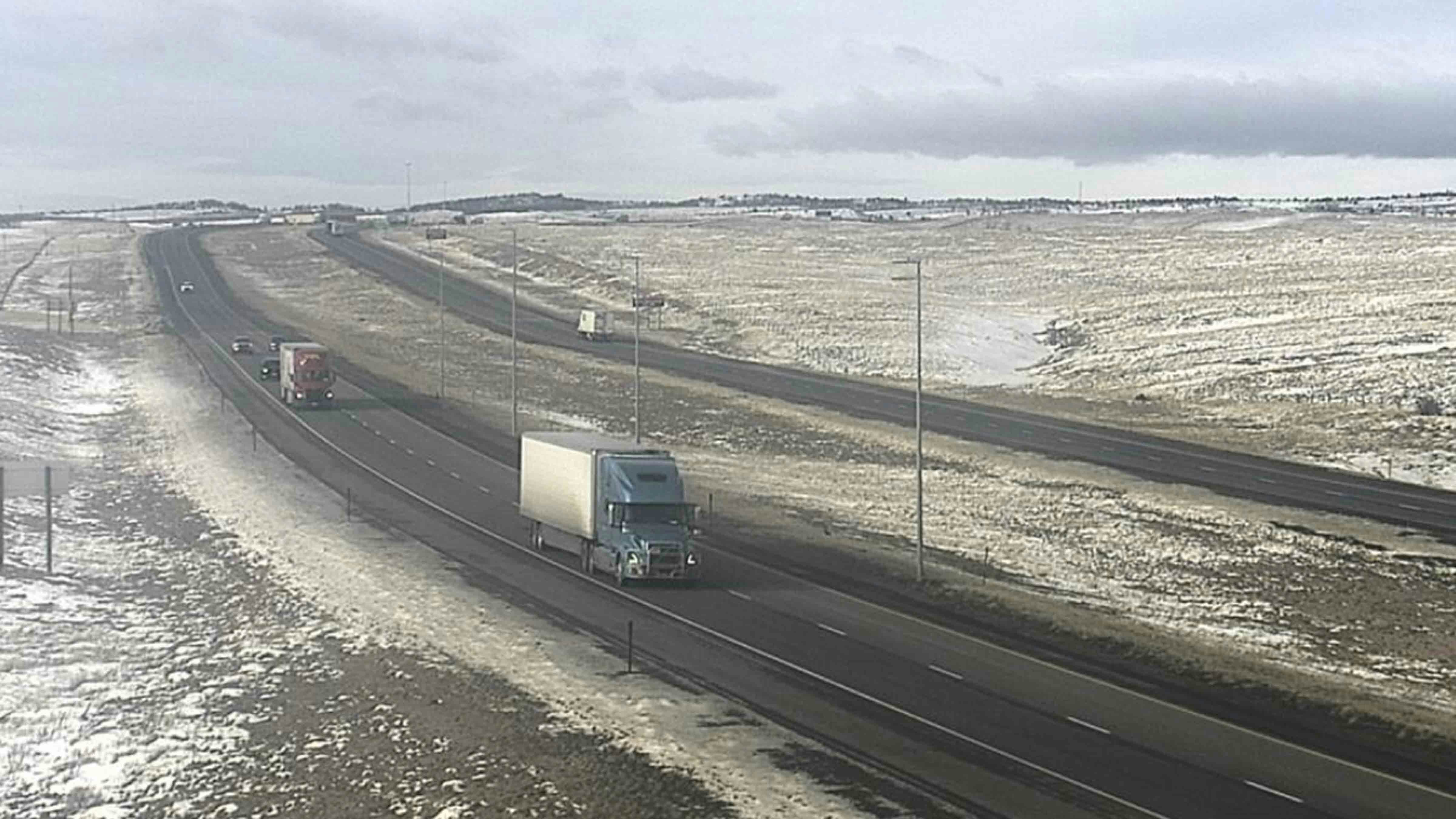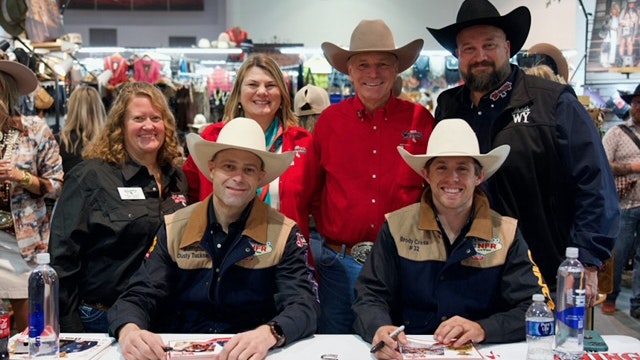In the early days of film, Wyoming’s own Tim McCoy was one of the “Big Four” of Hollywood Western stars alongside Tom Mix, Ken Maynard and Hoot Gibson.
During his career, McCoy starred in nearly 100 movies beginning in the 1920s, and was one of the few who easily made the transition from silent movies to “talkies” with the help of his golden voice.
In later years, McCoy had his own popular children’s television show in Los Angeles, won an Emmy and earned a star on the Hollywood Walk of Fame. His second wife was Inga Arvad, a Danish journalist and screenwriter who Adolf Hitler infamously was quoted as calling a “Nordic beauty.”
Though once a Hollywood darling and hero to thousands of American kids, today many people have never even heard of McCoy who even had top billing over a young movie actor starting out his career named John Wayne. McCoy was billed as the star of 1932’s “Texas Cyclone,” with a young Wayne listed among “The Players” in the opening credits.
Along with being rugged, leading-man handsome, McCoy’s signature tall cowboy hat made him easy to recognize in many of his Westerns.
McCoy spent his early years being mentored by former outlaws who worked beside him on the Wyoming range. He would go on to own a ranch, the Eagles Nest, located at the base of the Owl Creek mountains in Hot Springs County. He also was a recognized authority on American Indians of the West and was an officer in the military.
The Wyoming Runaway
McCoy grew up in Michigan, the son of Irish immigrants, and read all the penny novels about adventures in the Wild West.
According to McCoy in his autobiography “Tim McCoy Remembers the West,” his first exposure to cowboy life was as a 7-year-old at one of Buffalo Bill’s Wild West Shows in Saginaw, Michigan. He met the famous Buffalo Bill Cody backstage and was awed into silence.
Later as a young man, he spent time at the freight yard where wild horses were sold and the main attraction were cowboys who tamed them.
A cowboy McCoy recalled that he knew only as Bob taught him how to rope a half-wild bronc. After that, the young McCoy was determined to become part of this exciting life.
In 1909 at age 18, McCoy wrote that he slipped away from the Jesuit School he was attending and, without telling his parents, rode off into the Western sunset to be a cowboy — although he had no idea where he was going to hang his hat. Oklahoma? Nebraska? Montana? Arizona?
In a chance meeting on the train ride out West, he met up with a bronc rider from Lander who persuaded McCoy to come to Wyoming.
His first job as a cowboy was with the Double Diamond outfit located on the Wind River outside of Lander. For eight years, McCoy rode the Wyoming countryside on roundups and singing to the cattle on the prairie.
Like many of the young cowboys of this era, he worked on several ranches, moving on when the pace grew too monotonous and he needed a new adventure.
During this time, McCoy met legends of the Old West over campfires where former outlaws hinted about their adventures of a bygone era. On his days off, he would often ride to Cody and spend long hours in the Irma Hotel listening to Buffalo Bill Cody tell his stories.
Mentored By Outlaws
In 1910, McCoy rode into Thermopolis where the streets were dirt and all but one building made of wood. He explored the saloons of the fledging town and, after being sized up by the local law, was accepted as just another cowboy looking for work.
McCoy recalls that after deciding he wasn’t a “bad one,” the sheriff directed him to a job with Irish Tom Walsh.
McCoy joined Irish Tom’s Outlaw Train, which was notorious for ending up with all the stray cattle in the area despite the Maverick Law that made this practice of branding other men’s cows illegal. It also put a mark on young cowboys trying to start up their own herds in this fashion.
During his years in Thermopolis, McCoy candidly admitted that many acquaintances and friends had been found shot in the back for rounding up the cattle of other men, or simply being accused of it.
Among McCoy’s first partners were Henry Rothwell, an upright college graduate who introduced the young cowboy to the upper crust of Thermopolis, and Frank James, one of the former outlaws.
James had been a known member of the Hole-in-the-Wall Gang, the notorious group of outlaws that committed robberies in and around Hole-In-the-Wall Pass. He was also cousin to the James Brothers, according to his grandson, Bob James, in a 2022 interview.
A young McCoy was starstruck. He was meeting the heroes and villains from the penny novels of his youth.
Singing Cowboy
While still a cowboy for Irish Tom, McCoy wrote that he earned his nickname based on his golden voice. Two-men guard teams worked through the night, one riding clockwise and the other riding counterclockwise to keep the cattle together. This is where the legend of the singing cowboy was born.
It didn’t take much to spook the half-wild cattle. If a man were to stop to light a cigarette, the flash of the match would be enough to spark the beeves into running. The jingle of spurs or any other sound could also set them off.
To keep the cattle calm, the cowboys would sing as they rode the night circle. The cattle became accustomed to their voices and common tunes included “Chisholm Trail” and “Sam Bass.”
McCoy had a beautiful tenor voice, and instead of the usual Texas songs would sing the soft, lilting music of his Irish childhood. If he was on early guard, the other cowboys would lie awake, listening to his singing under the starry Wyoming sky.
One night, McCoy recalled in his memoir that he was sitting around the fire at suppertime when someone asked who was on second guard. The answer from Irish Tom was “Ted Price and the Canary.”
McCoy protested, “Wait a minute — I’m on guard with Ted Price!”
Frank James, still a half-outlaw, answered, “Hain’t ya heard yer name yet, young feller? You’re Irish Tom’s Canary.”
The name stuck and followed McCoy as he roamed from ranch to ranch.
Hollywood Bound
After quitting the Outlaw Train, McCoy established his own ranch in the Big Horn Basin with the Owl Creeks running through the property.
He had left Wyoming briefly to join the Army and, while at Fort Snelling, he had married a trick rider from Jackson Hole by the name of Agnes Miller. The couple returned to Wyoming to raise their three children.
During World War I, he sent a telegram to then-former President Teddy Roosevelt proposing that he recruit cowboys for the cavalry. He had received an answer back to proceed.
Although the cavalry was dissolved before these enthusiastic young men could ride into battle, McCoy’s time as a soldier helped him raise to rank of adjunct general for Wyoming.
By then it was 1922 and McCoy had been the adjutant general of Wyoming for a little less than three years. At 31 years old, his ranch on the North Fork of the Owl Creek had been expanded to 2,500 acres with another 2,500 leased from the government. During this time, McCoy ran a herd of 350 cattle, had a wife and three children.
But McCoy was bored.
That was when Hollywood came knocking.
An epic silent movie called “The Covered Wagon” was being produced that required 500 Indians to play as extras.
Over the years, McCoy had made several lifelong friends among the Arapaho Indians and had learned the sign language of the plains. McCoy wrote that he was asked to supply these men and, along with Lander pioneer Ed Farlow, did just that.
They got members from several tribes to come together for the movie, according to Farlow in his own memoir, “Wind River Adventures: My Life in Frontier Wyoming.”
Before “The Covered Wagon” even opened in early 1923, McCoy was already getting offers to star in his own movies. Although the first movie he worked on, “The Dude Wrangler,” a project that was to be filmed in Thermopolis, was abandoned, McCoy went on to star in nearly 100 films in Hollywood.
By 1931, he and his wife Alice were divorced, and she raised their three children at the Eagles Nest Ranch while McCoy spent his time between Wyoming and Hollywood. McCoy retained half the ranch before marrying a Danish beauty with her own fascinating past, Inga Arvad.
The two eventually moved to another home in Pennsylvania. There in a mansion McCoy had designed, Arvad raised their two sons while McCoy spent 360 days a year on the road to provide for his second family.
Despite all this fame, when McCoy sat down to write his memoir with his son Ronnie, it wasn’t about his years in Hollywood he wrote about, but his time as a young cowboy in Wyoming.
McCoy often said that despite the glitz and glam of Hollywood and being a huge Western movie star, his heart belonged to Wyoming.
Contact Jackie Dorothy at jackie@cowboystatedaily.com
Jackie Dorothy can be reached at jackie@cowboystatedaily.com.















